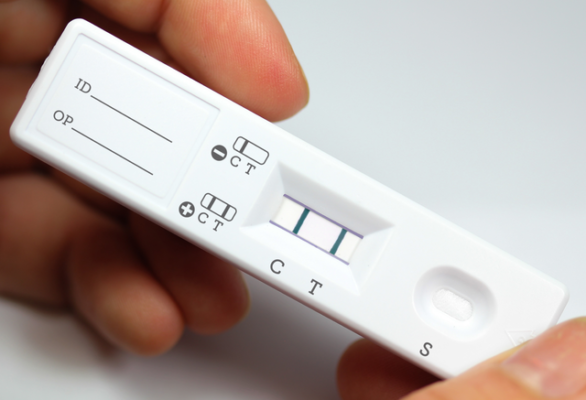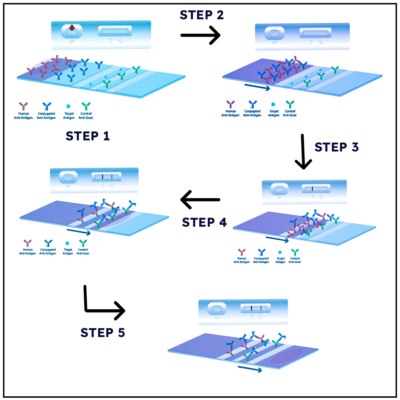Ultrananaotech, ULTRANANOTECH
LATERAL FLOW ASSAY PRODUCTS
Introduction
Lateral flow assay products, also known as lateral flow immunoassays or rapid tests, are diagnostic tools designed for rapid and easy detection of target analytes. These products are based on a simple and user-friendly format, where a sample is applied to a test strip and the results are visualized within minutes without the need for specialized equipment or laboratory infrastructure.
Components
The main components of a lateral flow assay is given as follows:
- Sample pad: serves as the entry point for the sample.
- Conjugate pad: contains labelled antibodies or antigens that specifically bind to the target analyte. As the sample flows along the strip, the target analyte binds to the labelled antibodies or antigens, forming a complex.
- Nitrocellulose membrane: coated with immobilized capture molecules that bind to the target analyte complex, resulting in a visible signal, such as a coloured line or dot. The intensity of the signal is proportional to the concentration of the target analyte in the sample.
- Absorbent pad: collects excess sample and prevents backflow.
These components work together to enable rapid and easy detection of target analytes in a sample.
Figure 1: A lateral flow assay product (Source: Fortis Life Sciences)
Working Principle
- The specimen is collected and added to the sample pad or device.
- The sample moves to the conjugate pad, driven by the capillary action facilitated by the porosity of the membrane. Here, it comes into contact with antibodies conjugated with gold nanoparticles or fluorescent particles. If the target is present, the labeled antibodies bind to the target, forming complexes that continue to migrate along the test.
- The sample and antibody complexes reach the antigen-coated nitrocellulose test line. If the target antigen is present, a colored line develops, with the intensity of the line indicating the quantity of the antigen. Digital readers can be used for quantitative results. If there are no specific antibodies to the antigen, no colored line forms, indicating a “negative” test.
- Most tests also include a control line coated with antibodies to capture any excess labeled particles. The development of a second colored line at the control line indicates that the test is operating correctly.
- The sample then reaches an absorbent pad, which allows for an increase in sample volume. This increased volume can be used to effectively wash away any unbound detector complexes from the test and control lines, thereby enhancing the test’s sensitivity.
Figure 2: Lateral Flow Assay Architecture (Source: NASA) Figure 3: Working Principle of Lateral Flow Assay
Applications
Lateral flow assay products find applications in various fields, including medical diagnostics, veterinary medicine, food safety, environmental monitoring, and drug testing. They are commonly used for point-of-care testing, home testing, and field testing due to their simplicity, speed, and portability.
Some of these applications are:
- In medical diagnostics, lateral flow assay products are employed for the detection of infectious diseases, such as COVID-19, malaria, HIV, and influenza. They are also used for pregnancy tests, drug abuse screening, and detection of cardiac markers and tumor markers.
- In veterinary medicine, lateral flow assays are utilized for the rapid diagnosis of animal diseases, such as parvovirus, distemper, and brucellosis. They play a crucial role in monitoring and controlling infectious diseases in livestock and companion animals.
- In the food industry, lateral flow assays are used for the detection of allergens, toxins, and pathogens in food samples. They enable rapid screening for foodborne contaminants and help ensure food safety and quality.
- Environmental monitoring applications of lateral flow assays include the detection of pollutants, pesticides
Sources:
- Lateral Flow Assay Products & Services – Fortis Life Sciences
- Lateral flow assays – PMC (nih.gov)
- Lateral Flow Assay | Cytodiagnostics Inc
- Lateral Flow Assays: Principles, Designs and Reagents | Leinco
- What is a lateral flow test and how does the technology work? (abingdonhealth.com)
Courtesy of: Evan A Alex, Intern at ULTRANANOTECH PVT LTD
 +91-8800903073, 8452810712
+91-8800903073, 8452810712



